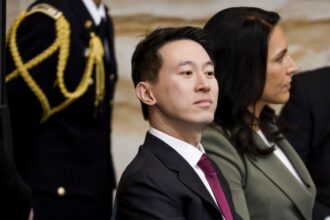As debates over health care reforms intensify across Canada, a striking new poll reveals that Ontario residents remain firmly committed to the province’s public health care system. Despite growing concerns about wait times and resource constraints, an overwhelming majority of Ontarians continue to favor the single-payer model over any private alternatives.
The comprehensive survey, conducted by Health Ontario Research Group last month, found that 78% of respondents strongly support maintaining and strengthening the province’s public health care framework. This comes at a critical juncture when provincial budgets are strained and some political voices have begun floating the idea of expanded private options.
“These results confirm what we’ve observed on the ground for years,” notes Dr. Eleanor Jameson, health policy expert at the University of Toronto. “Ontarians value universal access as a fundamental right, not a privilege determined by one’s financial status.”
The poll examined attitudes across various demographics and found consistent support regardless of income level, with even 72% of high-income respondents preferring public solutions over private alternatives. This contradicts the narrative that affluent citizens would naturally favor a two-tier system that might offer them faster access.
The survey also revealed nuanced perspectives on system improvements. While supporting the single-payer model, 65% of respondents expressed significant concerns about current wait times for specialists and non-emergency procedures. Another 58% worried about staffing shortages at hospitals across the province.
“People don’t want to abandon the system – they want it fixed,” explains Michael Cheng, health economist at Ryerson University. “The desire for improvement doesn’t equate to willingness to dismantle the fundamental structure of universal health care.”
Premier Doug Ford’s government has recently signaled openness to expanding private delivery options while maintaining public funding. However, the poll suggests this approach faces significant public skepticism, with only 23% of respondents expressing confidence that increased private involvement would improve overall system performance.
The strongest opposition to privatization came from rural communities, where 83% of respondents feared private options would concentrate in urban centers, further disadvantaging already underserved regions. This geographic divide presents a particular challenge for policymakers considering any health care reforms.
Healthcare workers themselves showed the highest levels of support for the public system, with 89% favoring improvements to the existing framework rather than structural overhauls. Their perspective carries particular weight given their firsthand experience with both the system’s strengths and shortcomings.
Public health experts point to successful reforms in provinces like British Columbia and Quebec that have addressed wait times and access issues while preserving the single-payer foundation. These models suggest Ontario could implement targeted improvements without abandoning the core principles that residents clearly value.
As provincial budget discussions approach this spring, these findings may significantly influence the political calculus around health care policy. With such strong public sentiment, any proposal perceived as undermining universal access could prove politically costly.
The critical question facing Ontario now is not whether to preserve universal health care, but how to modernize it for current challenges while maintaining its founding principle: that quality care should be available to all residents regardless of financial means. As we navigate post-pandemic realities and demographic shifts, can Ontario’s system evolve while staying true to the values its citizens so clearly cherish?










